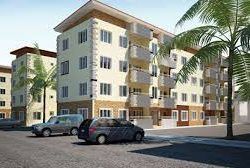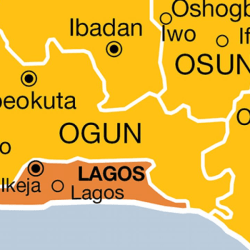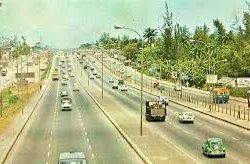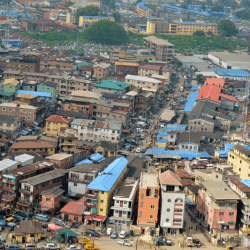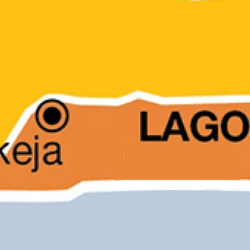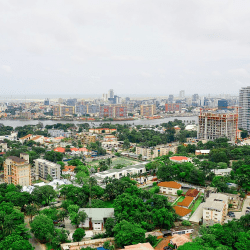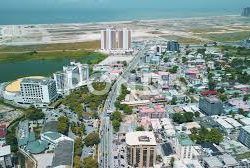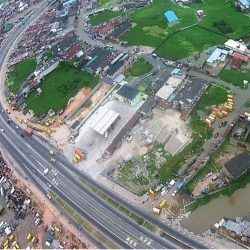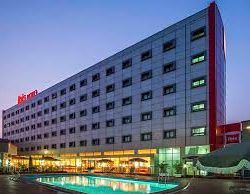Lagos State is made up of five top-level administrative divisions, namely:
- Badagry
- Epe
- Ikeja
- Ikorodu
- Lagos (Eko)
The divisions were created in May, 1968.



To bring government and development nearer to the people, the divisions were further divided into 20 local government areas
BADAGRY
The Division is made up of four local government areas: Ojo, Amuwo-Odofin, Ajeromi and Badagry, which also serve as the divisional headquarters. Badagry enjoys a pride of place in history especially as regards early European contacts with West Africa. By virtue of being a coastal town, Badagry was a major slave outpost and market during the pre-colonial era. It was also the first place in Nigeria where Christianity was preached in 1842.
EPE
The Division is divided into two local government areas, Epe and Ibeju-Lekki, with Epe serving as the divisional headquarters. Epe lies about 89kms. north east of the City. A peculiar feature of Epe is the presence of a long range of hills, which demarcates the town into equal parts. However, in the Ibeju-Lekki area, artisanal fishing, sandy beaches and coconut fringed Atlantic coastline are distinguished characteristics of the environment. Fishing and farming form the major occupations of the inhabitants of the Division.
IKEJA
Ikeja Division consists of eight local government authorities: Agege, Ifako-Ijaiye, Kosofe, Mushin, Alimosho, Oshodi/Isolo, Somolu and Ikeja, which serves as both the seat of the State Government and also the divisional headquarters. Ikeja is located 30km. North of Lagos. The Division has a concentration of both small and large-scale industries, while also having a large agricultural area in its rural parts. Nigerian’s largest and busiest international airport, (Murtala Muhammed Airport), is situated in Ikeja.
IKORODU
Ikorodu lies approximately 36km north of Lagos. The Division, by virtue of its position, serves as gateway to the country’s hinterland and is thus an active commercial center and divisional headquarters. The indigenous of these communities are mostly traders and farmers. Fishing also thrives especially in the riverine communities and along the Lagos Lagoon foreshore.
LAGOS (EKO)
This is the core of the State and a highly urbanised division consisting of five local governments: Lagos Island, Lagos Mainland, Surulere, Apapa and Eti-Osa with the City of Lagos being the pivot of an ever-expanding Greater Lagos and the divisional headquarters. Lagos is the chief commercial, financial and maritime nerve centre of Nigeria with two seaports at Apapa and Tin Can Island and ever expanding Central Business Districts at Tinubu and Victoria Island respectively. As the economic capital and major port of Africa’s most populous nation, Lagos has attracted immigrants from all over Nigeria and beyond as well as commercial entrepreneurs and industries from West Africa, Europe, Asia and the Americas.
Major settlements in the Division are Tarkwa Bay, Victoria Island, Lagos Island, Ikoyi, Obalende, Otto, Ijora, Apapa, Ebute-Metta, Yaba, Iddo, Makoko, Iwaya, Surulere and Iponri.
Lagos
Lagos is the commercial capital of Nigeria and the most populated city in the country and Africa.

Lagos was the administrative capital of Nigeria until December 1991 following the government’s decision to move the capital to Abuja in the centre of the country.

Lagos is a major African financial centre and is an economic hub.

The city has been described as the cultural, financial, and entertainment capital of Africa, and is a significant influence on commerce, entertainment, technology, education, politics, tourism, art, and fashion.

Lagos is also among the top ten of the world’s fastest-growing cities and urban areas.

The megacity has the fourth-highest GDP in Africa and houses one of the largest and busiest seaports on the continent.
The Lagos metropolitan area is a major educational and cultural centre in Sub Saharan Africa.

Lagos emerged as a home to the Awori tribe of the Yoruba of West Africa islands, which are contained in the present day Local Government Areas (LGAs) of Lagos Island, Eti-Osa, Amuwo-Odofin and Apapa.

Due to rapid urbanisation, the city expanded to the west of the lagoon to include areas in the present day Lagos Mainland, Ajeromi-Ifelodun, and Surulere.
This led to the classification of Lagos into two main areas: the Island, which was the original city of Lagos, and the Mainland, which it has since expanded into.
This city area was governed directly by the Federal Government through the Lagos City Council, until the creation of Lagos State in 1967, which led to the splitting of Lagos city into the present-day seven Local Government Areas (LGAs), and an addition of other towns (which now make up 13 LGAs) from the then Western Region to form the state.

The islands are separated by creeks, fringing the southwest mouth of Lagos Lagoon, while being protected from the Atlantic Ocean by barrier islands and long sand spits such as Bar Beach, which stretch up to 100 km east and west.

However, the state capital was later moved to Ikeja in 1976, and the federal capital moved to Abuja in 1991.

Even though Lagos is still widely referred to as a city, the present-day Lagos, also known as “Lagos Metropolitan Area” is an urban agglomeration or conurbation, consisting of 16 LGAs including Ikeja, the state capital of Lagos State.

This conurbation makes up 37% of Lagos State total land area, but houses about 85% of the state’s total population.

The business district of Lagos is home to Tinubu Square, named after the aristocratic slave trader Efunroye Tinubu. Lagos contains Murtala Muhammed International Airport, named after Nigerian president Murtala Muhammad, and is one of the busiest African airports. Lagos National Stadium has hosted various international sports events such as the 1980 African Cup of Nations.
